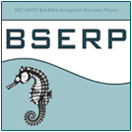|
The Black Sea is one of the most remarkable regional seas in the world. It is almost cut off from the rest of the world’s oceans, is over 2,200 m deep and receives the drainage from a 1.9 million km2 basin covering about one third of the area of continental Europe. Its only connection is through the Istanbul Strait, a 35 km natural channel, as little as 40 m deep in places. This channel has a two layer flow, carrying about 300 km3 of seawater to the Black Sea from the Mediterranean along the bottom layer and returning a mixture of seawater and freshwater with twice this volume in the upper layer. Every year, about 350 km3 of river water enters the Black Sea from an area covering almost a third of continental Europe and including significant areas of eighteen countries: Austria, Belarus, Bosnia and Herzegovina, Bulgaria, Croatia, Czech Republic, Georgia, Germany, Hungary, Moldova, Slovakia, Slovenia, Romania, Russia, Turkey, Ukraine, Yugoslavia. Europe’s second, third and fourth largest rivers (the Danube, Dnipro and Don) all flow to the Black Sea.
Isolation from the flushing effects of the open ocean, coupled with its huge catchment, has made the Black Sea particularly susceptible to eutrophication (the phenomenon that results from an over-enrichment of the sea by plant nutrients). Eutrophication has led to radical changes in the Black Sea ecosystem in the past three decades with a major transboundary impact on biological diversity and human use of the sea, including fisheries and recreation.
Prior to the 1990s, relatively little action had been taken to protect the Black Sea. During 1970-1986 WWTPs with biological treatment and deep-water outlets (about 2 km) were conctructed at towns/sities with narrow coastal shelves, notably along the Russian coast. However, in general terms, political differences during the Soviet era, coupled with a lack of knowledge of the environmental situation resulted in an ineffective response. In 1992 the Black Sea countries signed the Bucharest Convention followed closely by the first Black Sea Ministerial Declaration (the Odessa Declaration) in 1993. This inspired the GEF and other donors, particularly the European Union, to provide more than US$17 million support to the region to help implement the Odessa Declaration and to formulate the longer-term Black Sea Strategic Action Plan (BS SAP).
The Black Sea Environmental Programme (BSEP) was launched in June 1993. The Programme included a number of interventions by the GEF, including the development of the first Black Sea Transboundary Diagnostic Analysis (TDA), finalised in June 1996. On the basis of this comprehensive report senior government officials negotiated the Black Sea Strategic Action Plan (BS-SAP), signed on October 31st at a Ministerial Conference in Istanbul.
Following the signature of the BS-SAP, GEF funding was sustained in order to enable countries to complete National Black Sea Strategic Action Plans and for the negotiations on the institutionalisation of the Istanbul Commission’s Secretariat to be completed. This was a very protracted three-year process as countries struggled to overcome technical and legal issues of establishing the Secretariat. In the meantime however, progress was made in implementing part of the BS-SAP due to GEF seed money and considerable support from the European Commission. In October 2000, the Secretariat for the Black Sea Commission became operational.
Further GEF Full Project funding was secured in 2002 with the commencement of the Black Sea Ecosystem Recovery Project (BSERP). The project was split into two implementation phases - Phase I (Apr 2002 - Oct 2004) and Phase II (Nov 2004 - Oct 2007). The project supports regional aspects of the Black Sea Partnership for Nutrient Control and assists and strengthens the role of the Black Sea Commission.
Further, the project was set up to ensure the provision of a suite of harmonised legal and policy instruments for tackling the problem of eutrophication, and release of certain hazardous substances, and to facilitate ecosystem recovery. An important feature of the project has been its encouragement of broad stakeholder participation.
A cornerstone of this project is the development of a revised Black Sea TDA and SAP based on the existing 1996 documents. This document is an objective, non-negotiated analysis using best available verified scientific information and examines the state of the environment and the root causes for its degradation. It will provide the factual basis for the formulation of a Black Sea Strategic Action Programme (BS SAP), which will embody specific actions (policy, legal, institutional reforms or investments) that can be adopted nationally, usually within a harmonized multinational context, to address the major priority transboundary problems identified in the TDA, and over the longer term, enable the sustainable development and environmental protection of the Black Sea.
|
